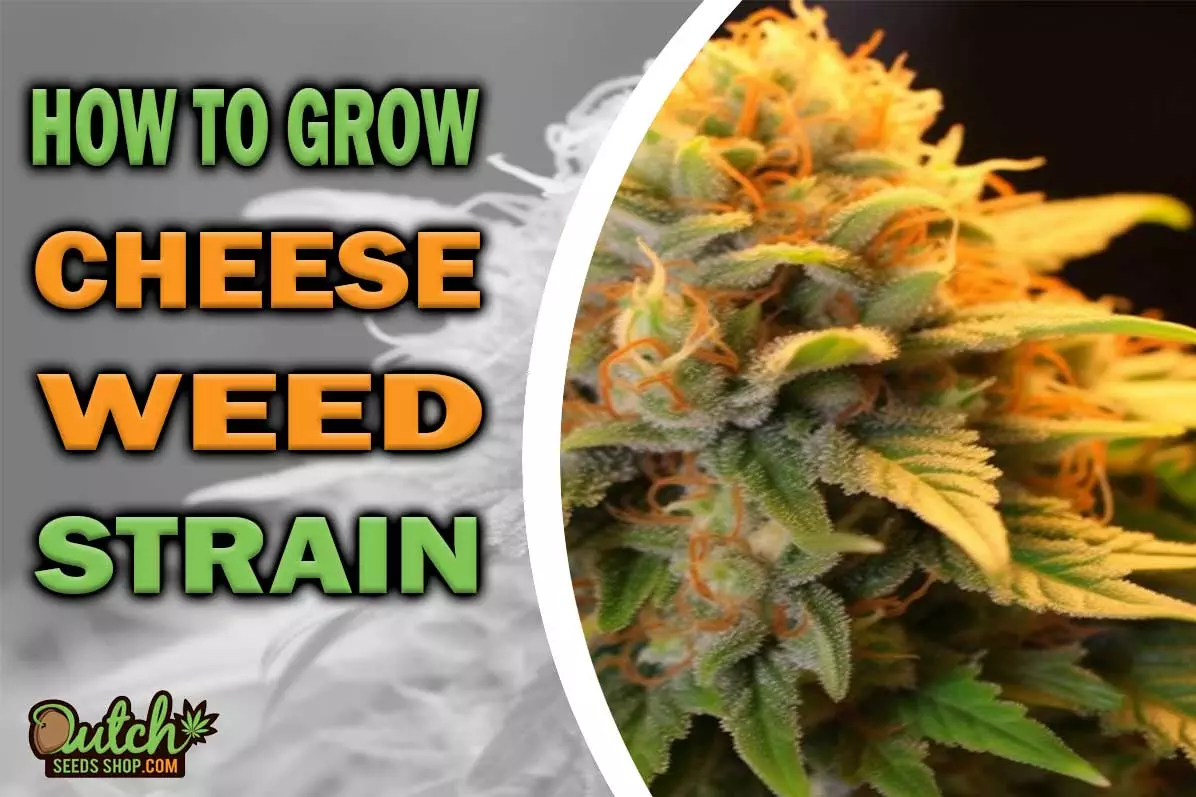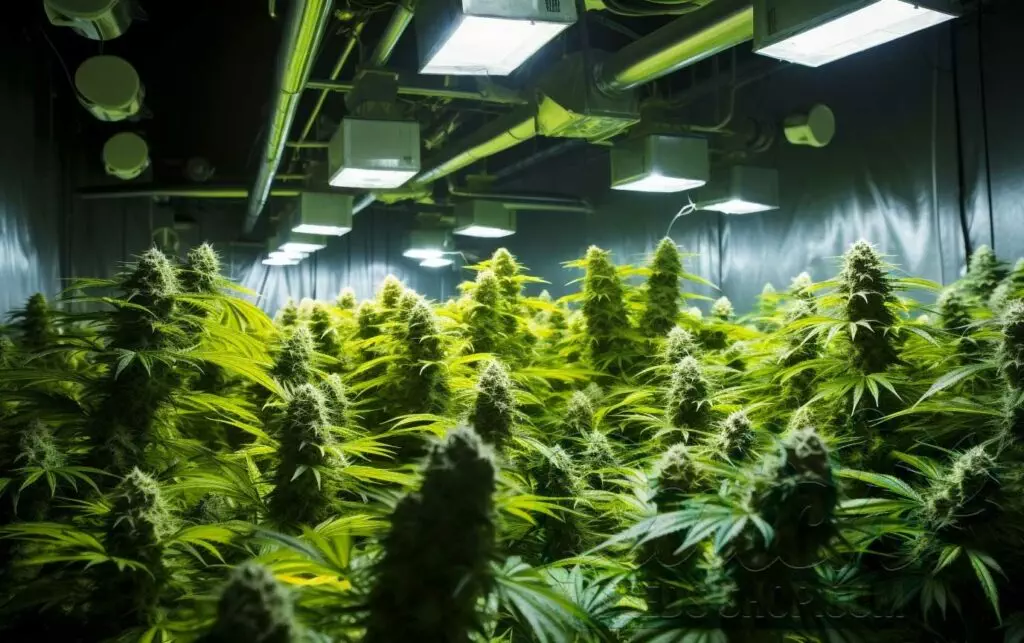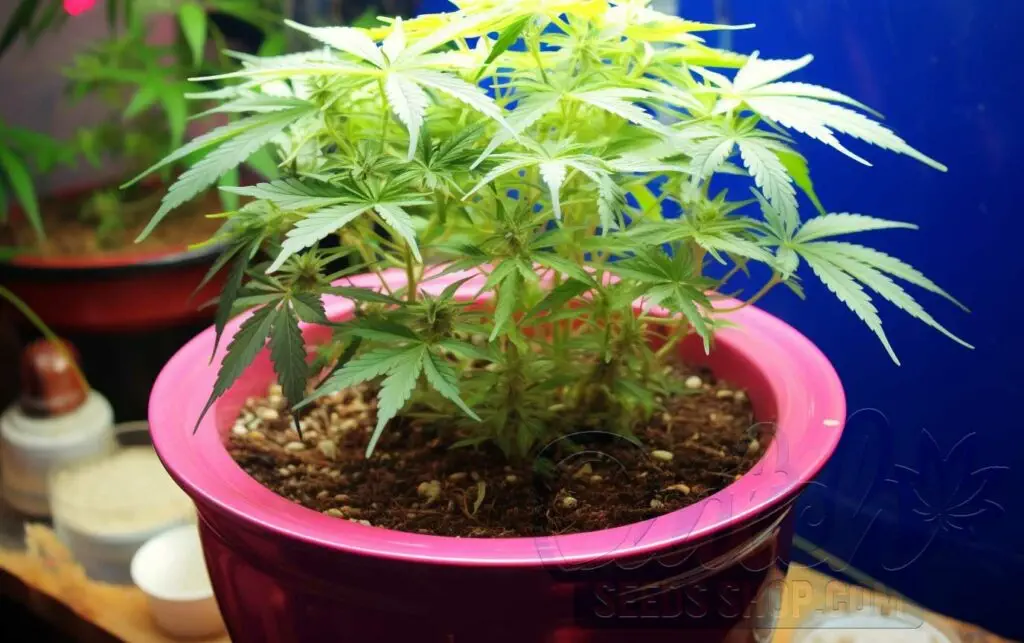How to Grow Cheese Strain
The Cheese strain stands out in the cannabis world for its unique blend of aromatic intensity and balanced effects. This guide provides a comprehensive approach to cultivating this exceptional strain, ensuring both novice and seasoned growers can maximize their yield and enjoy its distinctive characteristics.

Get To Know Cheese Strain
Cheese, a hybrid with 60% Indica and 40% Sativa, owes its lineage to Skunk #1, Afghani, and White Widow.
This blend results in a THC range of 14% to 18% and CBD levels below 0.7%.
Renowned for its intense aroma and flavors of acid, spicy cheese, and pungency, Cheese delivers effects that are relaxed, physical, cerebral, and euphoric.
Its popularity is further bolstered by its medical applications in stress relief, relaxation, and symptom management for conditions like depression, anxiety, and insomnia.
| Lineage | THC/CBD Content | Flavors | Effects | Grow Difficulty | Flowering Time | Yield |
| Skunk #1, Afghani, White Widow | 14% – 18% / < 0.7% CBD | Acid, Spicy, Cheese, Pungent | Relaxed, Physical, Cerebral, Euphoric | Easy | 50-60 days | Indoor: 1.8-2.1 oz/ft², Outdoor: 26-30 oz/plant |
Tips and Tricks for Growing Cheese Successfully
Growing Cheese is straightforward due to its resilience and disease resistance.
For optimal growth, consider these factors:
- Select Quality Seeds or Clones: Ensure you start with high-quality Cheese feminized seeds or clones.
- Acquire the Right Accessories: Invest in good odor control systems, especially for indoor growth, and consider using strong carbon filters.
- Pruning: Regular pruning will aid in light penetration and manage plant height.
- Cultivation Techniques: Cheese thrives in SCROG setups and responds well to different growing methods.
Cheese Indoor Growing
Growing the Cheese strain indoors offers a unique set of challenges and rewards.
This strain, known for its potent effects and distinct aroma, requires specific conditions to thrive.
Indoor cultivation allows for greater control over these conditions, ensuring optimal growth and quality.
Benefits of Indoor Growing

Indoor cultivation of Cheese presents numerous advantages.
High-quality weed is a significant benefit, as indoor environments enable better control over factors like light and nutrients, directly influencing potency and flavor.
The ability to harvest multiple times throughout the year, irrespective of external climate conditions, is another perk.
This aspect is particularly beneficial for Cheese, a strain that responds well to controlled environments.
Additionally, growing indoors offers enhanced privacy and security, crucial for growers in areas with restrictive cannabis laws.
Real-life examples include growers in urban settings who successfully cultivate Cheese in confined spaces like closets, leveraging its adaptability to varied environments.
- High-quality weed
- Multiple harvests
- Enhanced privacy and security
Setting Up Your Indoor Grow Space
Setting up an indoor grow space for Cheese involves several critical steps:
- Selecting the Right Space: Choose a dedicated area like a closet, tent, or spare room. Cheese’s high stature demands ample vertical space.
- Ventilation: Proper ventilation is essential to control odor and maintain air quality. This is crucial for Cheese, known for its pungent aroma.
- Lighting: Choosing the right grow lights impacts Cheese’s growth and yield. Consider factors like light spectrum and intensity.
- Cost Management: Start small to keep initial costs manageable, gradually expanding as you gain more experience with the strain.
Climate Control
Optimal climate control is essential for the successful indoor cultivation of Cheese.
Temperature and humidity must be carefully monitored and regulated to mirror the strain’s natural growing conditions.
Devices like environmental controllers offer automation, ensuring consistent conditions.
Air-cooled reflector hoods for HID lights help manage heat, while oscillating fans enhance air circulation.
The ability to adjust these variables is critical for Cheese, which thrives in a stable environment.
Types of Lights

The choice of grow lights significantly impacts Cheese’s development:
- HID Lights: High-Intensity Discharge lights, like Metal Halide (MH) for vegetative growth and High-Pressure Sodium (HPS) for flowering, are effective but generate heat.
- Fluorescent Lights: Ideal for small-scale growers or seedlings. They emit less heat but may not be sufficient for full growth cycles.
- LED Lights: Energy-efficient and emit a full spectrum of light. They are excellent for Cheese, providing the necessary light without excessive heat.
Growing Mediums and Containers
The growing medium and container type greatly influence the health of Cheese plants.
Soil is a traditional, forgiving medium, especially for beginners.
Hydroponics offers faster growth and potentially higher yields but requires more expertise.
Regarding containers, standard plastic pots are budget-friendly, but fabric containers promote healthier root systems and better airflow.
Proper drainage is essential to prevent root rot, a critical aspect for maintaining Cheese’s health.
Caring for Indoor-Grown Cheese
Regular care is crucial for Cheese.
This includes maintaining a consistent watering schedule with clean, pH-balanced water and managing nutrient levels.
Specific nutrient solutions tailored to Cheese’s needs can enhance growth and potency.
Pruning and training methods are also important to manage size and improve light exposure.
Monitoring for signs of pests or diseases early on is vital to ensure healthy plants.
Odor Control
Managing the pungent aroma of Cheese is a significant aspect of indoor growing.
Activated carbon filters effectively remove odors from the air, while proper air circulation through exhaust and intake fans helps maintain a fresh environment.
Odor-absorbing gels can also be used to mask the smell, ensuring discretion in indoor settings.
Cheese Outdoor Growing
The outdoor cultivation of Cheese brings a different set of opportunities and challenges compared to indoor growing.
This section will explore the key aspects of nurturing Cheese in an outdoor environment, highlighting the benefits, optimal planting times, setting up grow spaces, soil preparation, and nutrient management.
Benefits of Outdoor Growing
Growing Cheese outdoors offers several distinct advantages.
Cost-effectiveness is a primary benefit, as outdoor cultivation typically requires less investment in equipment and resources compared to indoor growing.
Larger plants and consequently, larger yields, are often achievable outdoors due to more space and natural sunlight.

The environmental sustainability of using natural resources like sunlight and rainwater is another significant advantage.
Furthermore, outdoor gardening provides therapeutic benefits, offering growers a peaceful and rewarding experience.
These factors make outdoor cultivation an attractive option for growing Cheese.
| Benefit | Description |
| Cost-Effectiveness | Reduced need for expensive equipment and electricity. |
| Larger Yields | Natural resources allow for bigger, more robust plants. |
| Environmental Sustainability | Uses natural sunlight and rainwater, reducing carbon footprint. |
| Therapeutic Benefits | Gardening outdoors can be a relaxing and fulfilling activity. |
Best Time to Plant Cheese Outdoors
For Cheese, the optimal planting time varies based on regional climate.
In the Northern Hemisphere, planting typically occurs in April or May.
It’s important to start with germination and seedling stages indoors before transitioning plants outdoors.
Understanding these early stages and employing the right transplanting techniques is crucial for the successful outdoor cultivation of Cheese.
Setting Up Outdoor Grow Spaces
Establishing an effective outdoor grow space for Cheese involves several steps:
- Assessing the Climate: Understanding local weather patterns is vital for choosing the best planting time and protecting plants from extreme conditions.
- Choosing the Right Location: Ensuring plants receive adequate sunlight is key. This might involve using spaces like garden plots, balconies, or rooftops.
- Wind Protection: Implementing windbreaks to shield plants from strong winds is crucial for their health and stability.
Selecting and Preparing Soil

The right soil is foundational for healthy Cheese plants.
Soil composition should ideally include a mix of clay, sand, and silt.
Performing a soil test can reveal nutrient deficiencies or pH imbalances, which can then be corrected through amendments.
When selecting soil, both organic options and pre-fertilized “super-soils” are viable, depending on the grower’s preference and experience level.
Nutrients and Fertilizers
Adequate nutrition is essential for Cheese grown outdoors.
The specific nutrient needs vary over the plant’s life cycle, requiring a balance of nitrogen, phosphorus, and potassium.
- Organic Fertilizers: Options like blood meal, bone meal, and kelp meal offer natural nutrition.
- Synthetic Fertilizers: These can provide targeted nutrients but should be used judiciously to avoid harming the natural soil biology.
How to Maximize Cheese Yield
To maximize the yield of Cheese strain, both indoors and outdoors, growers should employ advanced cultivation techniques.
This includes training methods to optimize plant structure and health.
CO2 enrichment and careful management of light intensity can significantly boost yields, especially in controlled indoor environments.
Growing the Cheese strain presents a unique combination of challenges and rewards.
Its robust flavor profile, potent effects, and versatility in both indoor and outdoor cultivation make it a rewarding endeavor for growers.
The intricacies of managing its growth environment, from soil composition to climate control, offer a fulfilling cultivation experience.
The effort invested in mastering Cheese pays off not just in the quantity of the yield but also in the quality of the final product.
Whether for personal use or commercial cultivation, the Cheese strain stands out as a resilient, adaptable, and rewarding choice for cannabis enthusiasts and growers alike.
FAQ
Can Cheese be grown in colder climates?
Yes, Cheese can be grown in colder climates, but it requires careful management of environmental conditions.
How often should Cheese plants be watered?
Watering frequency depends on the growth stage and environment.
Are there specific pests to watch out for with Cheese?
Cheese, like other cannabis strains, can be susceptible to common pests like spider mites, aphids, and whiteflies.
Can Cheese be grown using aeroponics?
Yes, Cheese can be successfully grown using aeroponic systems.
How long does it take for Cheese to reach full maturity?
Cheese typically reaches full maturity in about 50 to 60 days of flowering.
About the Author
Share the Love:
